Themed collection Inorganic Chemistry Frontiers HOT articles for 2018

Metal–organic framework-derived shuttle-like V2O3/C for electrocatalytic N2 reduction under ambient conditions
Metal–organic framework-derived shuttle-like V2O3/C is efficient for ambient electrocatalytic N2-to-NH3 fixation with excellent selectivity in 0.1 M Na2SO4.
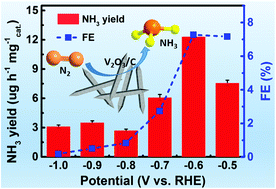
Inorg. Chem. Front., 2019,6, 391-395
https://doi.org/10.1039/C8QI01145A
A ligand conformation preorganization approach to construct a copper–hexacarboxylate framework with a novel topology for selective gas adsorption
A ligand conformation preorganization strategy was employed to design a hexacarboxylate ligand, and its corresponding copper-based MOF was constructed, exhibiting a novel topological structure and the potential for the separation and purification of acetylene and natural gas.
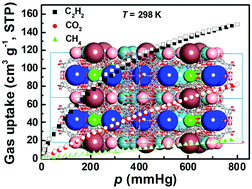
Inorg. Chem. Front., 2019,6, 263-270
https://doi.org/10.1039/C8QI01225C
Structural evolution and microwave dielectric properties of a novel Li3Mg2−x/3Nb1−2x/3TixO6 system with a rock salt structure
Phase transition from an orthorhombic superstructure to a cubic subcell structure has splendid advantages in dielectric properties of Li2O–MgO–Nb2O5–TiO2 quaternary solid solutions.
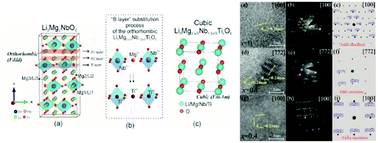
Inorg. Chem. Front., 2018,5, 3113-3125
https://doi.org/10.1039/C8QI00956B
Organosilica-based ionogel derived nitrogen-doped microporous carbons for high performance supercapacitor electrodes
A new preparation process is developed to yield stable, yellowish and transparent organosilica ionogels, which after pyrolysis yields N-doped microporous carbon with remarkable capacity.
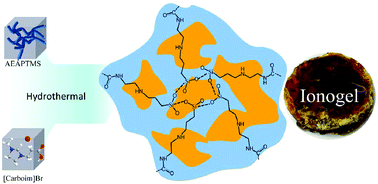
Inorg. Chem. Front., 2018,5, 3091-3098
https://doi.org/10.1039/C8QI01034J
One step conversion of waste polyethylene to Cr3C2 nanorods and Cr2AlC particles under mild conditions
Carbides (Cr3C2 and Cr2AlC) have been synthesized by using waste PE as a carbon source in an autoclave under mild conditions.
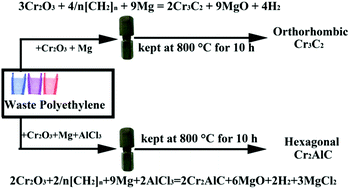
Inorg. Chem. Front., 2018,5, 2893-2897
https://doi.org/10.1039/C8QI00856F
Two NbO-type MOFs based on linear and zigzag diisophthalate ligands: exploring the effect of ligand-originated MOF isomerization on gas adsorption properties
Two NbO-type MOFs were constructed as a platform to reveal the effect of ligand-originated MOF isomerization on selective C2H2/CH4 and CO2/CH4 adsorption properties.
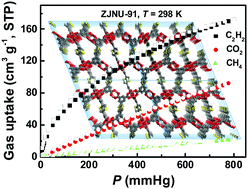
Inorg. Chem. Front., 2018,5, 2811-2817
https://doi.org/10.1039/C8QI00946E
Amorphous CuSnO3 nanospheres anchored on interconnected carbon networks for use as novel anode materials for high-performance sodium ion batteries
Bimetal oxide CuSnO3 nanospheres encapsulated in carbon networks were explored as novel anode materials for sodium batteries.
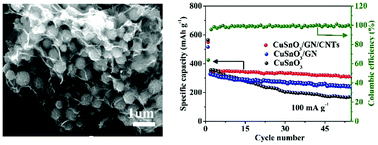
Inorg. Chem. Front., 2018,5, 2756-2762
https://doi.org/10.1039/C8QI00862K
Tailoring yolk–shell FeP@carbon nanoboxes with engineered void space for pseudocapacitance-boosted lithium storage
A unique yolk–shell FeP@C nanobox is synthesized by an etching-in-box combined with a phosphidation-in-box approach, manifesting remarkable pseudocapacitance-boosted lithium ion storage properties.
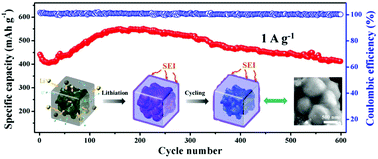
Inorg. Chem. Front., 2018,5, 2605-2614
https://doi.org/10.1039/C8QI00849C
High quantum yield and unusual photoluminescence behaviour in tetrahedral manganese(II) based on hybrid compounds
High quantum yields and unusual luminescence characteristics were successfully achieved by regulating the organic cations in tetrahedral manganese(II) complexes.
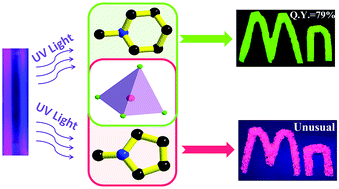
Inorg. Chem. Front., 2018,5, 2615-2619
https://doi.org/10.1039/C8QI00793D
A dual-function battery for desalination and energy storage
A dual-function battery composed of a NaTi2(PO4)3 anode and a Ag cathode with NaCl aqueous electrolyte has been reported for simultaneous seawater desalination and renewable energy storage.
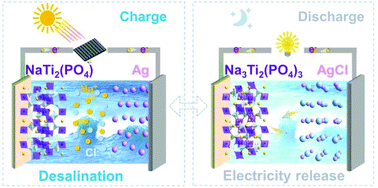
Inorg. Chem. Front., 2018,5, 2522-2526
https://doi.org/10.1039/C8QI00704G
A novel co-crystallization molecular ferroelectric induced by the ordering of sulphate anions and hydrogen atoms
The co-crystallization complex [EG]·[Cu(phen)2·SO4] undergoes a paraelectric–ferroelectric phase transition around 272 K which was confirmed by the observation of a large dielectric anomaly.
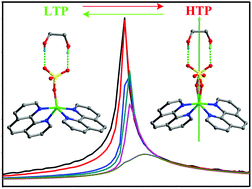
Inorg. Chem. Front., 2018,5, 2413-2419
https://doi.org/10.1039/C8QI00424B
Porous Fe–N-codoped carbon microspheres: an efficient and durable electrocatalyst for oxygen reduction reaction
Porous Fe–N-codoped carbon microspheres act as an efficient and stable electrocatalyst for ORR.
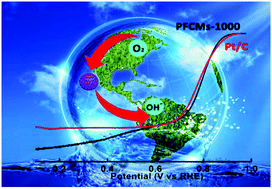
Inorg. Chem. Front., 2018,5, 2211-2217
https://doi.org/10.1039/C8QI00592C
Synthesis of dense MoS2 nanosheet layers on hollow carbon spheres and their applications in supercapacitors and the electrochemical hydrogen evolution reaction
Dense MoS2 nanosheets are grown on hydrophobic hollow carbon spheres through a solvothermal method for enhanced capacitive storage and electrocatalytic properties.
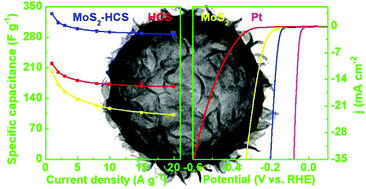
Inorg. Chem. Front., 2018,5, 2198-2204
https://doi.org/10.1039/C8QI00562A
Spent alkaline battery-derived manganese oxides as efficient oxygen electrocatalysts for Zn–air batteries
The discharged cathode from depleted primary Zn–MnO2 batteries can be recyclably utilized as efficient oxygen reduction/evolution electrocatalysts to build Zn–air batteries.
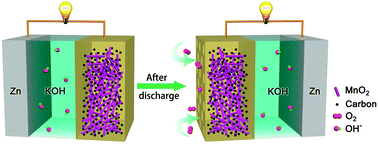
Inorg. Chem. Front., 2018,5, 2167-2173
https://doi.org/10.1039/C8QI00404H
Magnetic mesoporous TiO2 microspheres for sustainable arsenate removal from acidic environments
Unique magnetic mesoporous TiO2 microspheres exhibit superior arsenate removal performance and high stability in acidic environments.
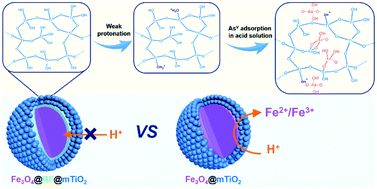
Inorg. Chem. Front., 2018,5, 2132-2139
https://doi.org/10.1039/C8QI00588E
Synthesis of a Cd(II) based 1D coordination polymer by in situ ligand generation and fabrication of a photosensitive electronic device
A 1D coordination polymer, which has optoelectronic device applications, has been synthesized by in situ ligand formation.
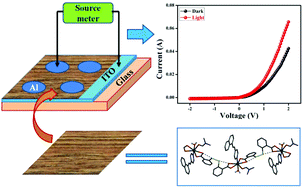
Inorg. Chem. Front., 2018,5, 1998-2005
https://doi.org/10.1039/C8QI00530C
A novel class of functional additives for cyclability enhancement of the sulfur cathode in lithium sulfur batteries
A novel and easy method improves the cycling performance of Li–S batteries by the facile addition of conventional lithium ion cathode materials.
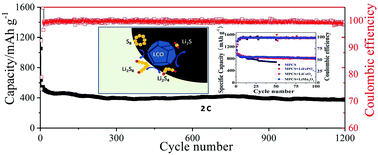
Inorg. Chem. Front., 2018,5, 2013-2017
https://doi.org/10.1039/C8QI00407B
Efficient Co@CoPx core–shell nanochains catalyst for the oxygen evolution reaction
Co@CoPx core–shell nanochains were prepared via a direct-current arc-discharge method and subsequent phosphorization at 350 °C.

Inorg. Chem. Front., 2018,5, 1844-1848
https://doi.org/10.1039/C8QI00428E
Ion selective separators based on graphene oxide for stabilizing lithium organic batteries
A thin bicomponent layer with GO and Super P enhances electroactive cathode material utilization for stable lithium organic batteries.
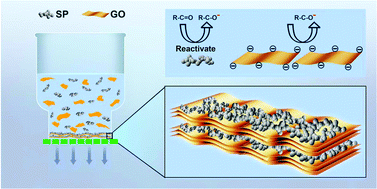
Inorg. Chem. Front., 2018,5, 1869-1875
https://doi.org/10.1039/C8QI00374B
Phase segregation enabled scandium fluoride–lanthanide fluoride Janus nanoparticles
A phase-segregation based protocol enables the fabrication of a series of scandium fluoride–lanthanide fluoride Janus particles.

Inorg. Chem. Front., 2018,5, 1800-1804
https://doi.org/10.1039/C8QI00328A
Controlled flexibility of porous coordination polymers by shifting the position of the –CH3 group around coordination sites and their highly efficient gas separation
By adjusting the position of the methyl group, we found significant changes in the structural flexibility of the obtained PCPs, which also showed good gas separation ability.
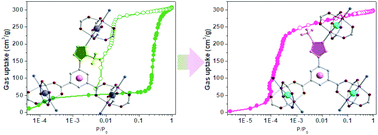
Inorg. Chem. Front., 2018,5, 1780-1786
https://doi.org/10.1039/C8QI00240A
Ba2ZnSc(BO3)3 and Ba4Zn5Sc2(BO3)8: first examples of borates in the Zn–Sc–B–O system featuring special structure configurations
First examples in the Zn–Sc–B–O system featuring a special Zn/Sc–O configuration ([Zn2(BO3)6]14− cluster, lowest-coordinated ScO5 polyhedra, and coexistence of ZnO4 and ZnO6 units).
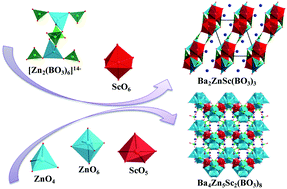
Inorg. Chem. Front., 2018,5, 1787-1794
https://doi.org/10.1039/C8QI00275D
Simulation of osmotic energy conversion in nanoporous materials: a concise single-pore model
A concise single-pore model with a finite reservoir is sufficiently accurate to simulate osmotic energy conversion in nanoporous materials.
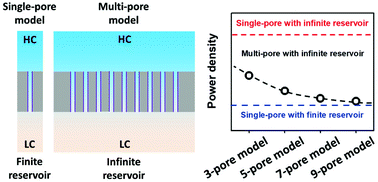
Inorg. Chem. Front., 2018,5, 1677-1682
https://doi.org/10.1039/C8QI00397A
New insights into the di-n-propylamine (DPA) molecule as an organic structural directing agent (OSDA) in the crystallization of AlPO4-11 molecular sieve
Di-n-propylamine (DPA) molecules induce the transformation from 4/6-MR chains to a 2D layered structure and then to 3D crystals of AlPO4-11 molecular sieves.

Inorg. Chem. Front., 2018,5, 1633-1639
https://doi.org/10.1039/C8QI00346G
Identification of the key factor promoting the enrichment of chiral polymorph A in zeolite beta and the synthesis of chiral polymorph A highly enriched zeolite beta
The acidity of the initial mixture is the key factor promoting the enrichment of chiral polymorph A in zeolite beta.
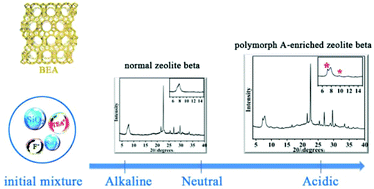
Inorg. Chem. Front., 2018,5, 1640-1645
https://doi.org/10.1039/C8QI00265G
Dramatic impact of the lattice solvent on the dynamic magnetic relaxation of dinuclear dysprosium single-molecule magnets
The significantly improvement of single-molecule magnetic performance was achieved by removing or replacing the lattice solvents in dinuclear Dy2 SMMs.

Inorg. Chem. Front., 2018,5, 1575-1586
https://doi.org/10.1039/C8QI00266E
Thin-walled hollow Au–Cu nanostructures with high efficiency in electrochemical reduction of CO2 to CO
Thin-walled hollow Au–Cu nanostructures were synthesized via galvanic replacement and the Kirkendall effect between copper and gold, and they showed high efficiency for electro-reduction of CO2 to CO.
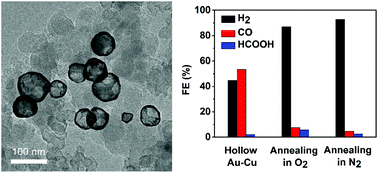
Inorg. Chem. Front., 2018,5, 1524-1532
https://doi.org/10.1039/C8QI00297E
Ferroelectric polarization-enhanced charge separation in a vanadium-doped ZnO photoelectrochemical system
A ferroelectric polarization protocol was demonstrated to be favorable for photoinduced charge separation in the V-doped ZnO based photoelectrochemical system.
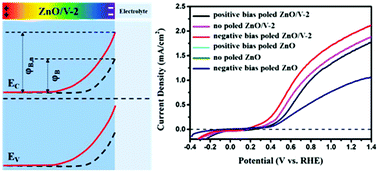
Inorg. Chem. Front., 2018,5, 1533-1539
https://doi.org/10.1039/C8QI00231B
Facile synthesis of Co3O4 nanosheets from MOF nanoplates for high performance anodes of lithium-ion batteries
Co3O4 nanosheets are readily synthesized from a nanoplate MOF precursor and showed a remarkable performance as an anode material for lithium-ion batteries.
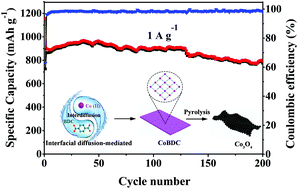
Inorg. Chem. Front., 2018,5, 1602-1608
https://doi.org/10.1039/C8QI00196K
Sulfur vacancy-rich CdS loaded on filter paper-derived 3D nitrogen-doped mesoporous carbon carrier for photocatalytic VOC removal
A new strategy is explored to fabricate a sulfur vacancy-rich CdS composite photocatalyst with a nitrogen-doped 3D porous carbon matrix for VOC removal.

Inorg. Chem. Front., 2018,5, 1470-1476
https://doi.org/10.1039/C8QI00305J
Comprehensive studies on phosphoric acid treatment of porous titania toward titanium phosphate and pyrophosphate monoliths with pore hierarchy and a nanostructured pore surface
A reaction of porous titania monoliths in aq. H3PO4 provides hierarchically porous titanium phosphates with a variety of nanotextured surfaces.
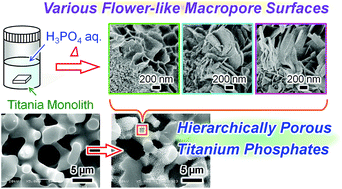
Inorg. Chem. Front., 2018,5, 1397-1404
https://doi.org/10.1039/C8QI00146D
Teaching an old molecule new tricks: evidence and rationalisation of the slow magnetisation dynamics in [DyTp2Acac]
Combined analyses of magnetic and luminescence measurements, with the support of theoretical calculations, help elucidate the origin of [DyTp2Acac]'s SMM behaviour.
![Graphical abstract: Teaching an old molecule new tricks: evidence and rationalisation of the slow magnetisation dynamics in [DyTp2Acac]](/en/Image/Get?imageInfo.ImageType=GA&imageInfo.ImageIdentifier.ManuscriptID=C8QI00174J&imageInfo.ImageIdentifier.Year=2018)
Inorg. Chem. Front., 2018,5, 1346-1353
https://doi.org/10.1039/C8QI00174J
High-performance rechargeable aqueous Zn-ion batteries with a poly(benzoquinonyl sulfide) cathode
Aqueous Zn-ion batteries with a poly(benzoquinonyl sulfide) cathode show good electrochemical performance.
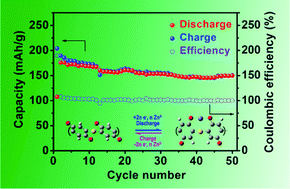
Inorg. Chem. Front., 2018,5, 1391-1396
https://doi.org/10.1039/C8QI00197A
Large spontaneous polarization in polar perovskites of PbTiO3–Bi(Zn1/2Ti1/2)O3
With the substitution of Bi(Zn0.5Ti0.5)O3, a continuously enhanced spontaneous polarization up to 112 μC cm−2 has been observed in (1 − x)PbTiO3–xBi(Zn0.5Ti0.5)O3.
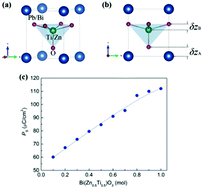
Inorg. Chem. Front., 2018,5, 1277-1281
https://doi.org/10.1039/C8QI00184G
Broad color tuning and Eu3+-related photoemission enhancement via controllable energy transfer in the La2MgGeO6:Eu3+,Bi3+ phosphor
Herein, we provide the new UV converted tunable phosphors and increase the emission intensity via a controllable energy transfer.

Inorg. Chem. Front., 2018,5, 1076-1084
https://doi.org/10.1039/C8QI00126J
Self-polymerized hollow Mo-dopamine complex-induced functional MoSe2/N-doped carbon electrodes with enhanced lithium/sodium storage properties
3D hierarchical MoSe2/N-doped carbon microsphere composites exhibit excellent rate capacities as anode materials in lithium-ion and sodium-ion batteries.
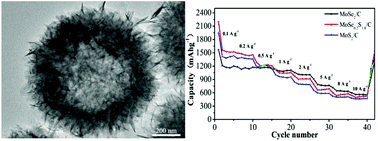
Inorg. Chem. Front., 2018,5, 1026-1032
https://doi.org/10.1039/C8QI00101D
Heteroatom dopings and hierarchical pores of graphene for synergistic improvement of lithium–sulfur battery performance
Lithium–sulfur batteries: Both the cycling stability and rate capability are adequately enhanced due to the synergistic effect of heteroatom dopings and hierarchical pores of carbon matrix, guiding the design of advanced scaffolds towards high-performance lithium–sulfur batteries.
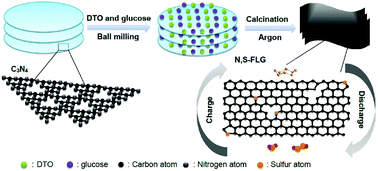
Inorg. Chem. Front., 2018,5, 1053-1061
https://doi.org/10.1039/C8QI00160J
Facile fabrication of CuS microflower as a highly durable sodium-ion battery anode
CuS micro-flower was synthesized by dealloying and adopted as an anode in SIB with high rate and stable cycle performances.
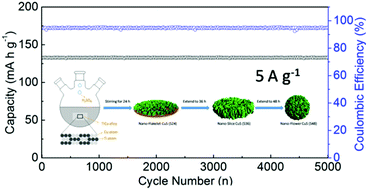
Inorg. Chem. Front., 2018,5, 1045-1052
https://doi.org/10.1039/C8QI00117K
Selective and rapid detection of ascorbic acid by a cobalt oxyhydroxide-based two-photon fluorescent nano-platform
A novel and facilitated two-photon approach was developed for efficient ascorbic acid (AA) detection.
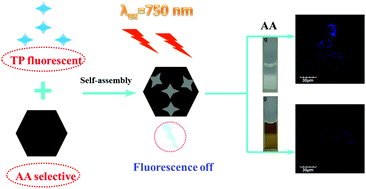
Inorg. Chem. Front., 2018,5, 773-779
https://doi.org/10.1039/C8QI00003D
A facile self-template and carbonization strategy to fabricate nickel nanoparticle supporting N-doped carbon microtubes
A facile one-pot approach is utilized to construct nickel-ion–PDA complex thin coatings on MoO3@PPy microtubes, which can be carbonized under an inert atmosphere to obtain nickel/N-doped carbon microtubes (Ni/NCMTs).
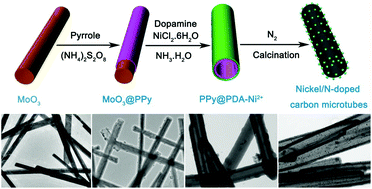
Inorg. Chem. Front., 2018,5, 844-852
https://doi.org/10.1039/C8QI00039E
Three-dimensional supramolecular phosphomolybdate architecture-derived Mo-based electrocatalytic system for overall water splitting
With phosphomolybdate supramolecular architecture-derived Mo2C@NC and MoO2@NC as cathode and anode, an efficient electrolyzer was constructed, which possessed excellent overall water splitting activity.
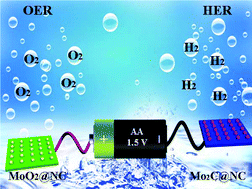
Inorg. Chem. Front., 2018,5, 819-826
https://doi.org/10.1039/C7QI00812K
Sulfur–hydrazine hydrate-based chemical synthesis of sulfur@graphene composite for lithium–sulfur batteries
A sulfur–hydrazine hydrate chemistry-based method is reported here to integrate the sulfur and N-doped reduced graphene oxide to obtain S@N-rGO composite with 76% sulfur. The as-obtained S@N-rGO composite displays a good rate capability and excellent stability.

Inorg. Chem. Front., 2018,5, 785-792
https://doi.org/10.1039/C7QI00726D
Formation of multi-shelled nickel-based sulfide hollow spheres for rechargeable alkaline batteries
Metal sulfides with multi-shelled hollow structures are promising electrode materials for rechargeable alkaline batteries due to their abundant redox centers and electrochemically active sites.
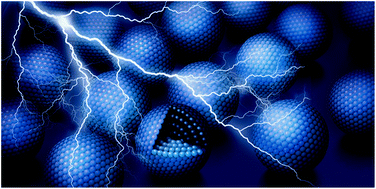
Inorg. Chem. Front., 2018,5, 535-540
https://doi.org/10.1039/C7QI00760D
Crystal structures, phase transitions and thermal expansion properties of NaZr2(PO4)3–SrZr4(PO4)6 solid solutions
Structures and phase transitions depending on compositions and temperature between R![[3 with combining macron]](https://www.rsc.org/images/entities/char_0033_0304.gif) c and R
c and R![[3 with combining macron]](https://www.rsc.org/images/entities/char_0033_0304.gif) in Na(2−2x)Srx[ ]xZr4(PO4)6 have been investigated.
in Na(2−2x)Srx[ ]xZr4(PO4)6 have been investigated.
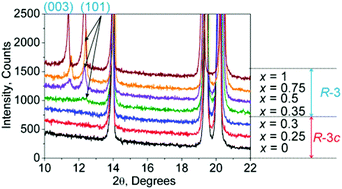
Inorg. Chem. Front., 2018,5, 619-625
https://doi.org/10.1039/C7QI00782E
Highly selective electrochemical detection of antipsychotic drug chlorpromazine in drug and human urine samples based on peas-like strontium molybdate as an electrocatalyst
Electrochemical detection of antipsychotic drug chlorpromazine based on peas-like strontium molybdate as an electrocatalyst.
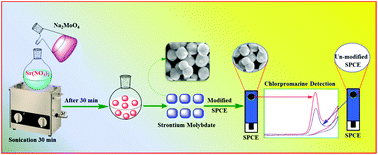
Inorg. Chem. Front., 2018,5, 643-655
https://doi.org/10.1039/C7QI00743D
A study on electrochemical properties of P2-type Na–Mn–Co–Cr–O cathodes for sodium-ion batteries
The comprehensive electrochemical properties of P2-type Na–Co–Mn–O cathodes for sodium ion batteries could be significantly enhanced by optimal Cr-doping.
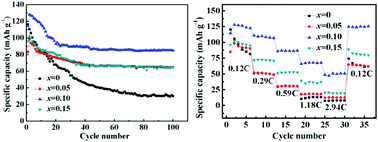
Inorg. Chem. Front., 2018,5, 577-584
https://doi.org/10.1039/C7QI00778G
Facile preparation of monodisperse NiCo2O4 porous microcubes as a high capacity anode material for lithium ion batteries
Monodisperse NiCo2O4 porous microcubes were used as anode materials for lithium-ion batteries, and they exhibit outstanding rate capability and cycling stability.
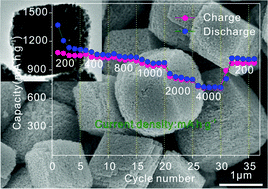
Inorg. Chem. Front., 2018,5, 559-567
https://doi.org/10.1039/C7QI00648A
Nanocomposite of MoO2 and MoC loaded on porous carbon as an efficient electrocatalyst for hydrogen evolution reaction
MoO2/MoC@C nanocomposite was synthesized by an ultrasonic spray pyrolysis, and the synergic effect between MoO2 and MoC in hydrogen evolution reaction was demonstrated.
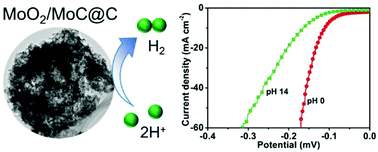
Inorg. Chem. Front., 2018,5, 446-453
https://doi.org/10.1039/C7QI00689F
Structure and excellent visible light catalysis of Prussian blue analogues BiFe(CN)6·4H2O
BiFe(CN)6·4H2O, which exhibited a layered structure of FeC6 and BiN6 coordination polyhedra, was synthesised and exhibited excellent visible light catalytic activity.
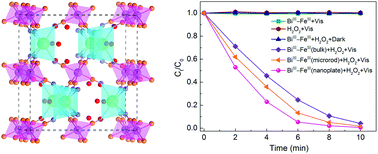
Inorg. Chem. Front., 2018,5, 438-445
https://doi.org/10.1039/C7QI00647K
Highly efficient oxygen evolution electrocatalysts prepared by using reduction-engraved ferrites on graphene oxide
A simple and efficient method was explored for synthesizing efficient ferrite-based OER electrocatalysts by using reduction-engraved ultrafine ferrite nanoparticles on a conductive GO support.
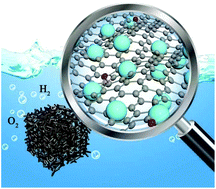
Inorg. Chem. Front., 2018,5, 310-318
https://doi.org/10.1039/C7QI00681K
Nitrogen-rich sandwich-like carbon nanosheets as anodes with superior lithium storage properties
Nitrogen-rich sandwich-like carbon nanosheets used as anodes for LIBs exhibited high discharge capacity and remarkable rate capability.
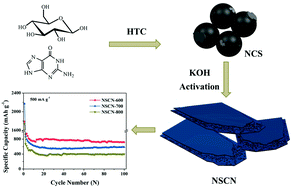
Inorg. Chem. Front., 2018,5, 225-232
https://doi.org/10.1039/C7QI00567A
Environmentally friendly, aqueous processed ZnO as an efficient electron transport layer for low temperature processed metal–halide perovskite photovoltaics
The aqueous processed ZnO/PCBM modified ETLs enable low-temperature processed, thermally stable and efficient perovskite solar cells showing negligible hysteresis.
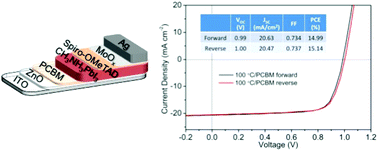
Inorg. Chem. Front., 2018,5, 84-89
https://doi.org/10.1039/C7QI00667E
A new two-dimensional layered germanate with in situ embedded carbon dots for optical temperature sensing
A carbon dots@germanate composite has been synthesized by embedding carbon dots into a double-layered germanate in situ, which exhibits excitation-dependent and temperature-responsive photoluminescence.
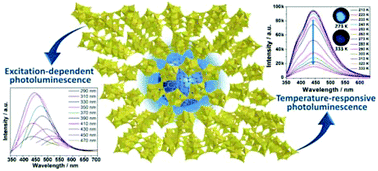
Inorg. Chem. Front., 2018,5, 139-144
https://doi.org/10.1039/C7QI00602K
Encapsulating surface-clean metal nanoparticles inside metal–organic frameworks for enhanced catalysis using a novel γ-ray radiation approach
A facile, efficient and universal γ-radiation strategy has been developed to incorporate surface-clean metal nanoparticles into metal–organic frameworks exhibiting remarkable catalytic activity and stability.
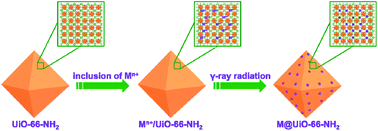
Inorg. Chem. Front., 2018,5, 29-38
https://doi.org/10.1039/C7QI00577F